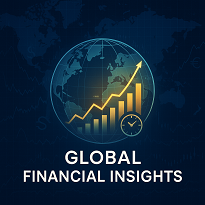Microsoft Fabric: A Catalyst for the Future of Data-Driven Innovation
The rapid evolution of data management and analytics tools has positioned
Fabric as a transformative platform in the tech sector. With its June 2025 updates, Fabric is now poised to redefine how businesses leverage data for strategic decision-making. This article explores Fabric's advancements, their market implications, and why investors should take note.
Key Advancements in Microsoft Fabric
Microsoft's June 2025 release introduces features that cater to both technical and non-technical users, broadening its appeal across industries:
Unified Data Engineering & Science
Fabric's integration of T-SQL and Python in notebooks allows developers to execute complex queries and analyze data in a single environment. The new Materialized Lake Views simplify data pipeline management, reducing operational overhead by automating view maintenance and monitoring data quality. This streamlines workflows for enterprises dealing with large datasets.AI-Driven Efficiency
The Copilot Auto-Completion feature in notebooks leverages GPT-4o-mini to suggest code snippets, reducing errors and accelerating development. For non-technical users, the Real-Time Intelligence module enables natural language queries for dashboard creation, democratizing data access across organizations.Security & Compliance
Managed Private Endpoints (MPE) now support secure data ingestion from Azure services like Event Hubs, addressing compliance concerns for regulated industries. Combined with Fabric's Git-integrated Data Factory capabilities, businesses can ensure auditable, version-controlled pipelines.
Market Impact and Competitive Position
Microsoft Fabric competes directly with cloud-based analytics platforms like AWS SageMaker, Google BigQuery, and
. Its unified approach—combining data engineering, visualization, and AI—offers a compelling alternative to fragmented solutions.
Recent trends show Microsoft's stock outperforming competitors, reflecting investor confidence in its holistic cloud strategy. Fabric's ability to integrate with existing Microsoft ecosystems (e.g., Power BI, Azure) further strengthens its value proposition.
Investment Considerations
- Growth Potential: The global data analytics market is projected to exceed $120 billion by 2027, with enterprises prioritizing scalable, user-friendly tools. Fabric's modular architecture and enterprise-grade security align with this demand.
- Risk Factors: While Fabric's features are robust, adoption depends on user training and integration with legacy systems. Smaller firms may face higher implementation costs.
- Buy or Hold?: Investors with a 3-5 year horizon should view Microsoft as a core holding. Short-term volatility may arise from macroeconomic headwinds, but Fabric's strategic positioning in AI-driven analytics secures long-term growth.
Conclusion
Microsoft Fabric is not just an update—it's a foundational shift toward unified data management. Its June 2025 enhancements solidify Microsoft's leadership in enterprise analytics, offering investors exposure to a high-growth sector. For portfolios focused on tech innovation, Microsoft remains a top contender, especially as businesses worldwide prioritize data-driven strategies.
Recommendation: Consider adding Microsoft to your portfolio or increasing existing holdings. Monitor quarterly updates on Fabric adoption rates and cloud revenue growth for tactical adjustments.
Data as of June 2025. Past performance does not guarantee future results.
Sign up for free to continue reading
By continuing, I agree to the
Market Data Terms of Service and Privacy Statement

Comments
No comments yet